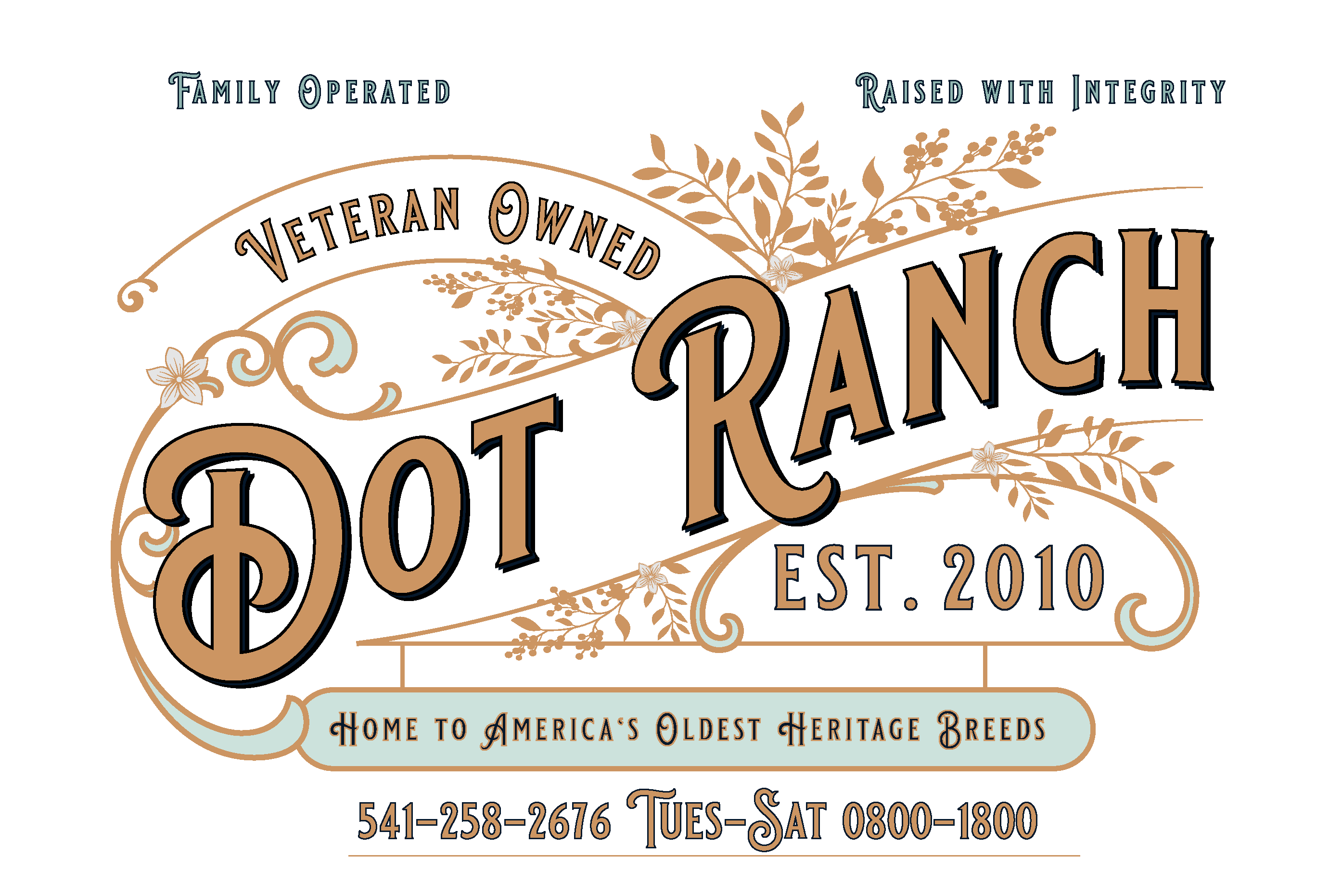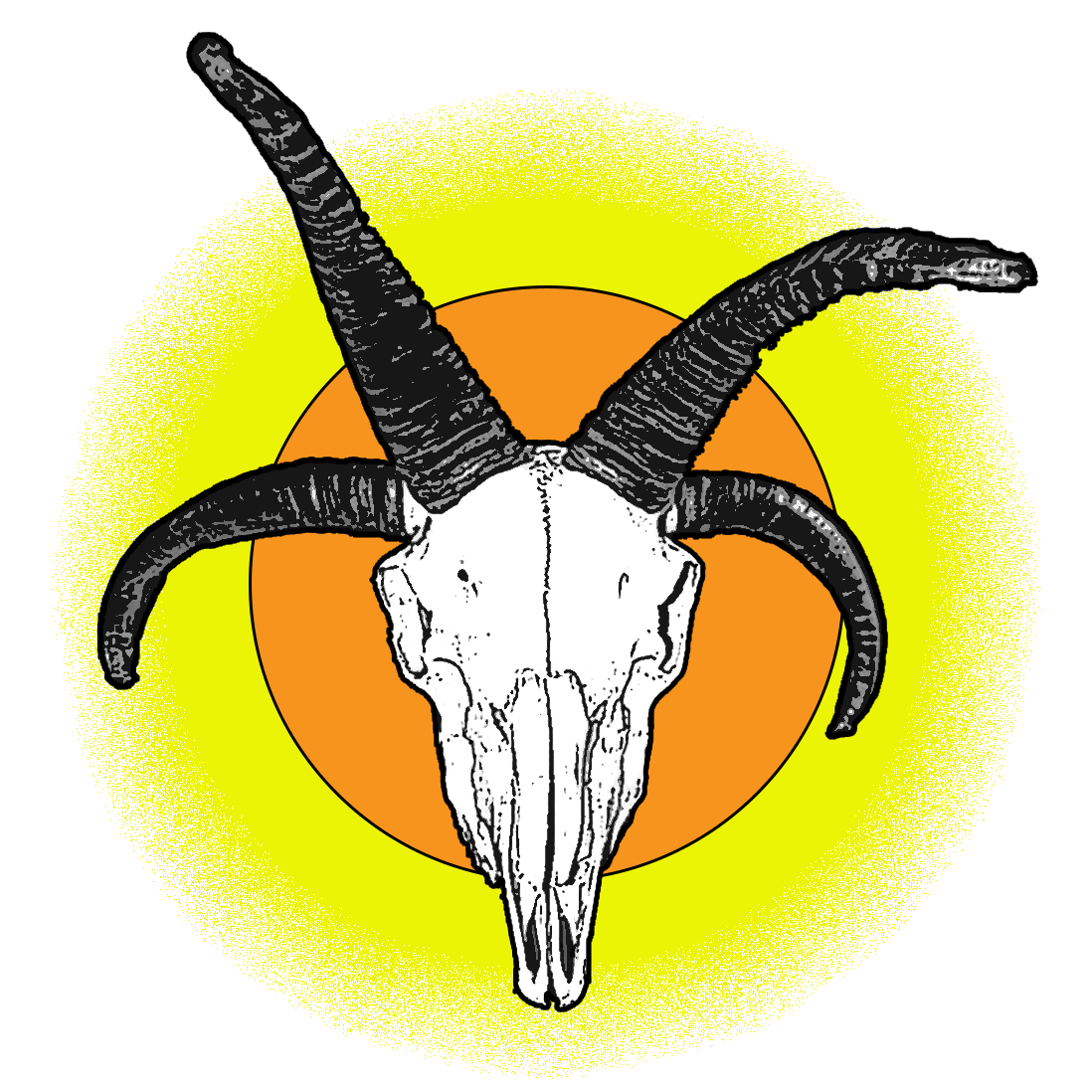America's Oldest Poultry Breeds
"Javas are one of the oldest breeds of the American class, and although they once enjoyed great popularity, they are now extremely rare... Historically, the glossy Black Java was seen more often than the Mottled variety, and this remains true today."
(Janet Vorhwald Dohner, The Encyclopedia of Historic and Endangered Livestock and Poultry Breeds; 2001: Yale University)
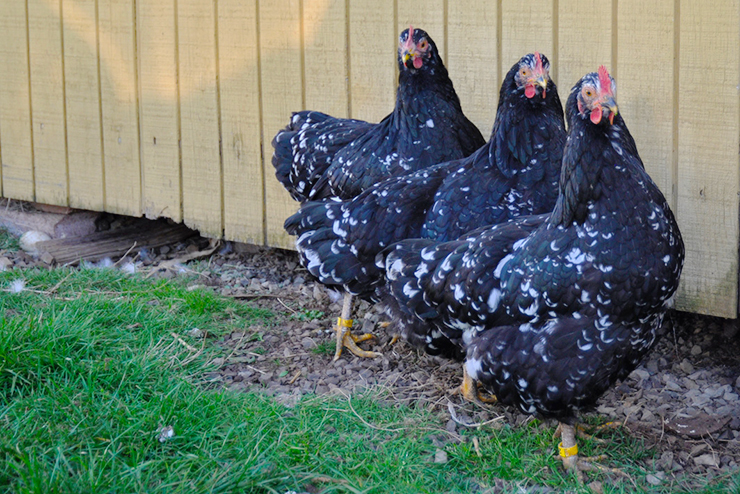
Mottled Java Chickens
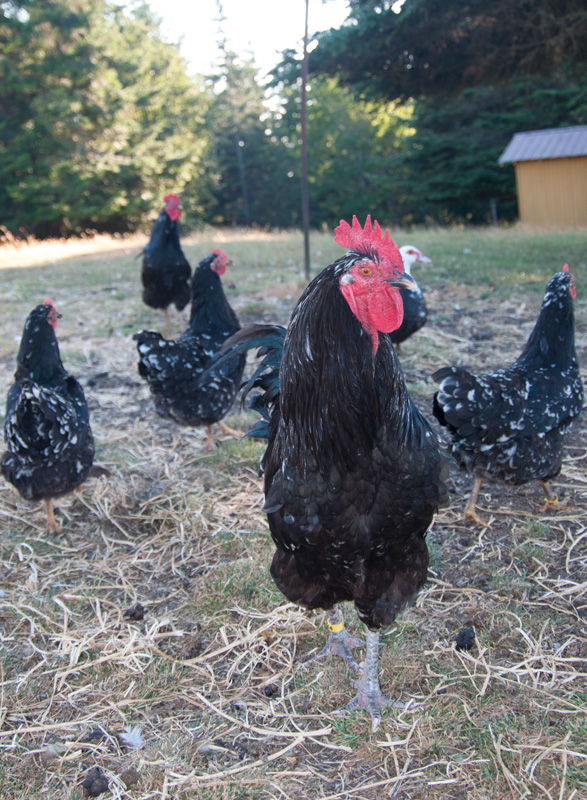 Mottled Java Chickens are the second oldest breed of chicken in America, they are predated only by the equally rare but better known Dominique. Listed by the Livestock Conservancy as Endangered when we first began breeding them, Java's have since been upgraded to the Watch list.1
Mottled Java Chickens are the second oldest breed of chicken in America, they are predated only by the equally rare but better known Dominique. Listed by the Livestock Conservancy as Endangered when we first began breeding them, Java's have since been upgraded to the Watch list.1
Once prized for their black plumage and creamy yellow skin, Mottled Javas were the pride of the farmer's market. In the 1800's, it was considered a mark of excellence to have a black plumed bird for the table, as it would be obvious to all if the bird had been properly plucked or not. Mottled Javas were a dual purpose breed, producing both delicious brown eggs and meat on their large frames. They were used as a foundation bird for the establishment of other breeds such as the Black Jersey Giant, Barred Plymouth Rock, and the Black Australorp. 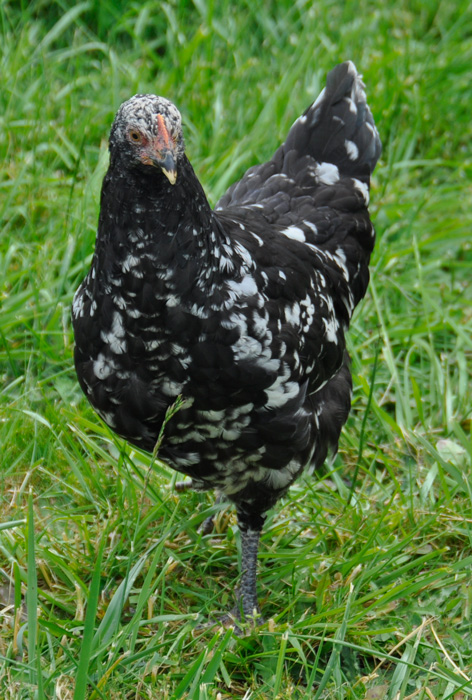
However, by the early 1900's, the Java was in decline, and by 1940, they had nearly disappeared from farm yards, replaced by their faster growing descendants. By the 1980's, the Javas had almost disappeared entirely from the American rural landscape, and were only preserved at a lone hatchery and in the hands of under a half dozen private breeders.
Luckily, the plight of the Java was recognized, and The Livestock Conservancy joined in the fight to save these magnificent historical birds from becoming just another footnote to factory farming. The Java Recovery Project has been instituted, and Dot Ranch is a participant in raising and breeding Mottled Java's for this conservation effort. These heritage breed birds are far too valuable for both their beauty, their place in our unique American history, and as an integral part of the biodiversity of modern domesticated birds to be forgotten or lost.
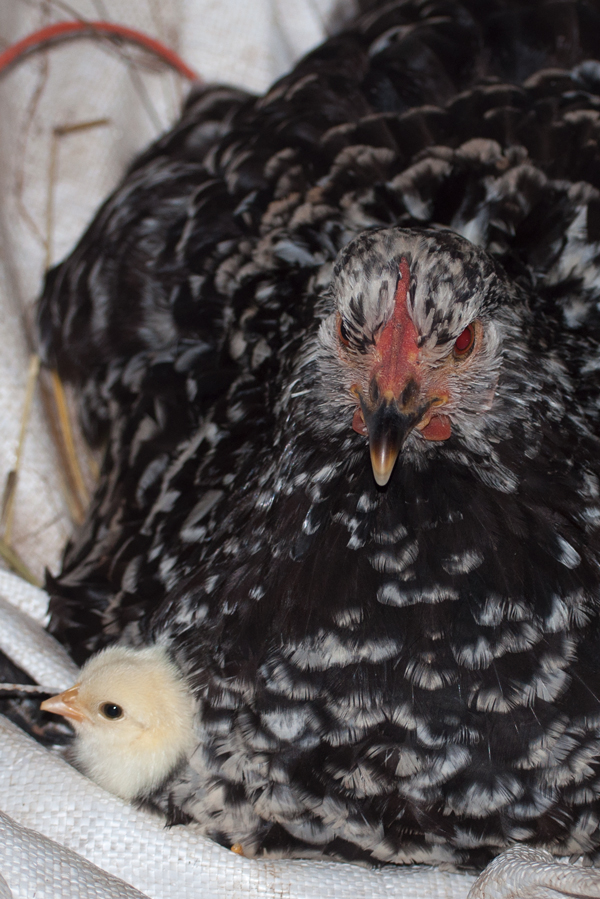 Here at Dot Ranch, we raise Mottled Javas in much the same sort of homesteading conditions in which they were originally bred. During the winter, we collect eggs for the incubator, and during key parts of summer, we allow our hens to go broody and naturally hatch their eggs. By preserving these mothering instincts, we're ensuring that this breed remains able to reproduce without human intervention, a key requirement in The Livestock Conservancy's definition of a heritage chicken. Our birds are selected not only for their physical traits and adherence to the American Poultry Association's Standard of Perfection, but also for their overall fitness, temperament, and longevity. It is typical for our hens to continue to lay for upwards of 5 years, and we never allow roosters with human aggression to breed. This is particularly important since homesteads tend to be family driven, and the last thing any parent wants is to see their child come inside with the long, angry scratches from a rooster's spurs.
Here at Dot Ranch, we raise Mottled Javas in much the same sort of homesteading conditions in which they were originally bred. During the winter, we collect eggs for the incubator, and during key parts of summer, we allow our hens to go broody and naturally hatch their eggs. By preserving these mothering instincts, we're ensuring that this breed remains able to reproduce without human intervention, a key requirement in The Livestock Conservancy's definition of a heritage chicken. Our birds are selected not only for their physical traits and adherence to the American Poultry Association's Standard of Perfection, but also for their overall fitness, temperament, and longevity. It is typical for our hens to continue to lay for upwards of 5 years, and we never allow roosters with human aggression to breed. This is particularly important since homesteads tend to be family driven, and the last thing any parent wants is to see their child come inside with the long, angry scratches from a rooster's spurs.
While our Mottled Java's are very slow maturing, typically not reaching laying age until 8-9 months, and usually not ready for the table before 7 months, they're very productive egg layers. Because they're a hardier bird, they don't require heating lamps in the winter, and will actually lay all around the year with just a bit of supplemental lighting from a regular CF light bulb. For the table, we do recommend feeding them a higher protein ration than what feed stores typically provide, because it assists their growth rate considerably. Our hens generally get a 18-20% protein feed, and our growout birds receive a 25% ration.
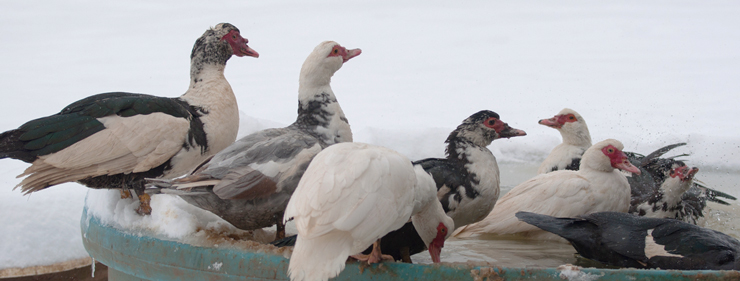
Muscovy Ducks
Not all ancient breeds are threatened or endangered, in fact, one of the oldest domesticated animals in the world is also among the most plentiful: Muscovy ducks. These multi-purpose ducks provide eggs, meat, jewelry grade feathers, and an invaluable service: parasite, slug, and fly control. Muscovies are native to South America, and had been domesticated for thousands of years before European contact.3 They are a non migratory bird, and there is some debate that they're actually more of a goose than a duck, as they graze like geese, perch and roost in trees as well as on the ground, and don't quack like ducks usually do. 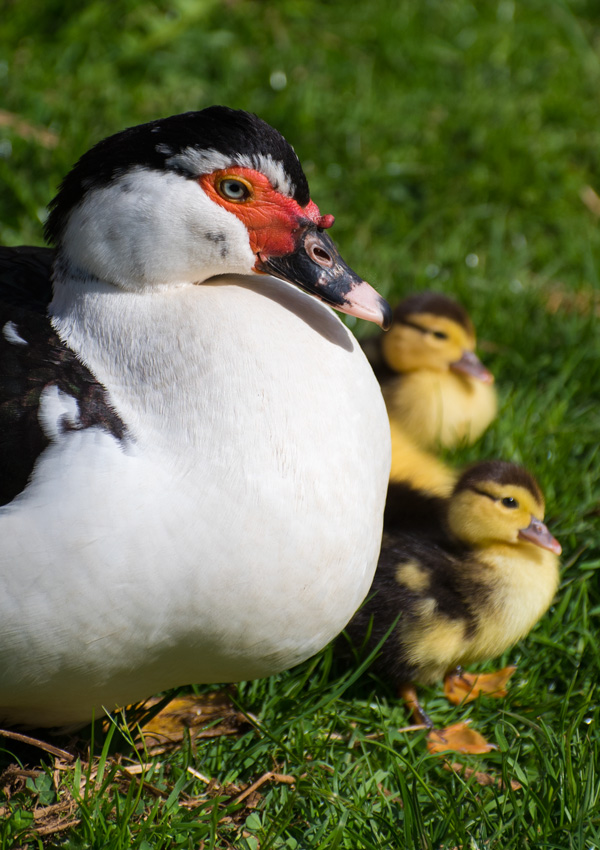 They also have a longer incubation period than ducks, averaging 30 days vs the 25-28 days more common to ducks, and more in line with geese who gestate at 30-35 days.4 Muscovies have a very distinctive hissing and cooing noise, it's very quiet, and very cute, although it can be unsettling to people who've never heard it before. They are also incredibly prolific birds, and may lay up to three fertile nests annually, with nest sizes ranging from 8-32 eggs.
They also have a longer incubation period than ducks, averaging 30 days vs the 25-28 days more common to ducks, and more in line with geese who gestate at 30-35 days.4 Muscovies have a very distinctive hissing and cooing noise, it's very quiet, and very cute, although it can be unsettling to people who've never heard it before. They are also incredibly prolific birds, and may lay up to three fertile nests annually, with nest sizes ranging from 8-32 eggs.
Muscovies are also unique among ducks in that their oil glands are very small and underdeveloped in comparison to most wood ducks and water ducks. As a perching duck, Muscovies really don't require a lot of water to be happy, and in fact, they can drown in deep ponds if their feathers lose their oily sheen. Because of this, they're perfectly happy with cheap $10 plastic kiddy swimming pools for a water source, which makes them great for backyard enthusiasts. The other great effect of the smaller oil glands is that Muscovy ducks have a much lighter and less greasy flavor than other ducks, making them ideal for the table. Muscovies are able to fly for short distances, but as they are very heavy, they tend to stick to low flight lines. Muscovies are actually so well suited to survival that they will quite readily breed with wild ducks, usually resulting in sterile offspring. Because of this, they are considered an invasive species in certain states, and their import may be in violation of state laws, particularly in the southeastern United States.
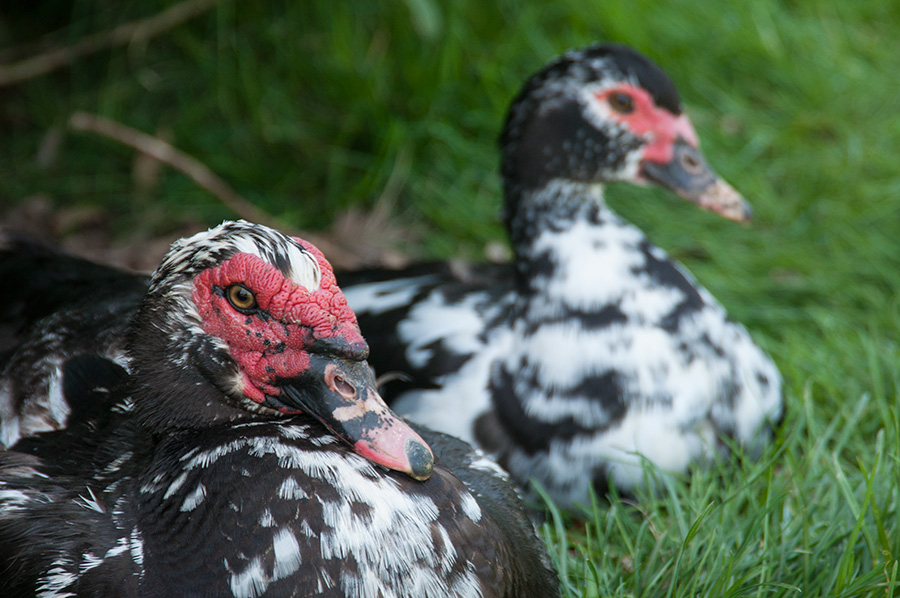 We raise Muscovies primarily for their meat, although we do harvest eggs. Muscovy eggs have a heavier texture than goose eggs, but they don't have any of the green tint associated with mallard eggs. Many people enjoy the eggs for the table, either fried like chicken eggs, or used in baking. They make particularly good custards, as the albumen levels are a bit more concentrated. However, what endears Muscovies to us the most isn't their culinary use, it's their hardiness, good temper, and use in reducing fly and wasp populations. When we first moved to Dot Ranch, the place was completely infested with wasp and yellow jacket nests. While wasps are important pollinators, anybody who has been stung by one can attest to how they make for awfully inhospitable neighbors. Within two years of introducing Muscovy Ducks to our ranch, our wasp population was reduced by half. There are still nests here and there, but the yellow jackets have quit making ground nests entirely, which makes it much more pleasant to walk around.
We raise Muscovies primarily for their meat, although we do harvest eggs. Muscovy eggs have a heavier texture than goose eggs, but they don't have any of the green tint associated with mallard eggs. Many people enjoy the eggs for the table, either fried like chicken eggs, or used in baking. They make particularly good custards, as the albumen levels are a bit more concentrated. However, what endears Muscovies to us the most isn't their culinary use, it's their hardiness, good temper, and use in reducing fly and wasp populations. When we first moved to Dot Ranch, the place was completely infested with wasp and yellow jacket nests. While wasps are important pollinators, anybody who has been stung by one can attest to how they make for awfully inhospitable neighbors. Within two years of introducing Muscovy Ducks to our ranch, our wasp population was reduced by half. There are still nests here and there, but the yellow jackets have quit making ground nests entirely, which makes it much more pleasant to walk around.
Citations
1 The Livestock Conservancy Java Fact Sheet
2 Dohner, J. V. (2001). The Encyclopedia of Historic and Endangered Livestock and Poultry Breeds. New Haven, CT: Yale University Press.
3 Stahl, P. (2003). Pre-Columbian Andean animal domesticates at the edge of empire. World Archaeology, 34(3), 470-483.
4 Cornell Lab of Ornithology Muscovy Ducks
